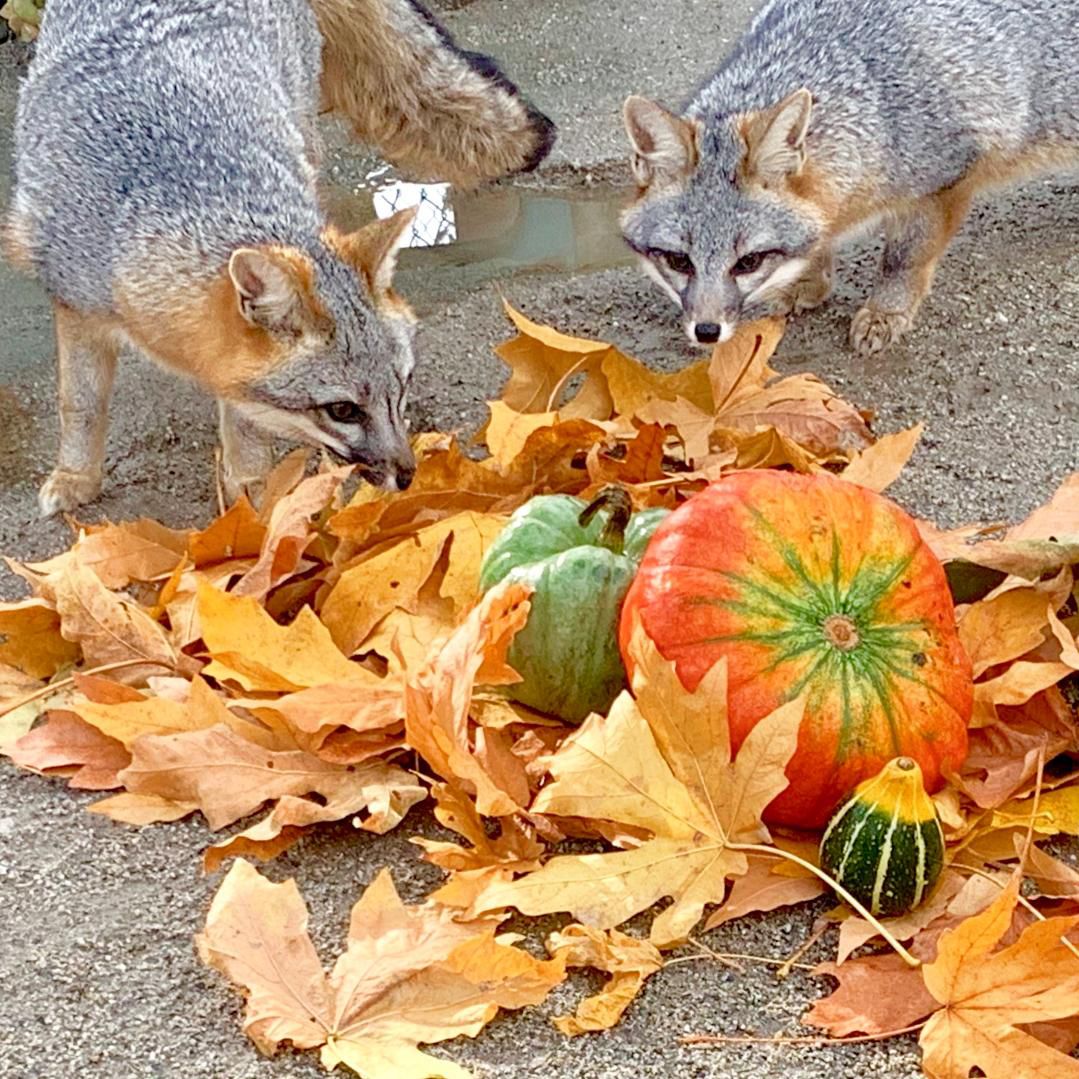Profile | Sonora and Siskiyou

-
BirthdaySonora, female, and Siskiyou, male, born February 2018
-
SpeciesGrey fox
Urocyon cinereoargenteus -
Professors ofRodent control and see dispersal
-
Field of StudyArboreal antics
-
Food and Vet Care$224 per month | $2688 per year for each fox
About the species
RANGE | Gray foxes range throughout much of North America, Central America, and even into South America. In North America, they live throughout the United States, save for the northernmost areas. In Central America they roam across most of the country, but in South America they reside only in the very northernmost regions.
FUN FACTS | The grey fox is primarily nocturnal or crepuscular and makes its den in hollow trees, stumps or appropriated burrows during the day. Gray foxes are omnivorous. While part of its diet is made up of small mammals like mice and voles, rabbits, birds and eggs and even insects, they eat more plants than most species of fox. Plants like fruits and vegetables, nuts and berries comprise a significant part of their diet. In the summer and autumn, grasshoppers and crickets are an important part of its diet.
They are the only members of the dog family that has the ability to climb trees. They are so agile in trees that when they climb down, they can go either head or tail first. This is possible because they have very strong, non-retractable claws that are hooked to help grab onto trees. They climb trees to escape from predators and it also allows them to catch prey or find eggs in a nest. They also enjoy being up in a tree for a nap in a sunny spot. While grey foxes can use their long claws to dig a den or they will find another small mammal’s abandoned underground burrow to live in, it is more common for their dens to be located in hollow trees or logs, rock piles, crevices between and under cliffs, and even in the lower forest canopy.
Meet Sonora and Siskiyou
These siblings were born in a den behind a luxury hotel, which was discovered and disturbed when the kits were just a few weeks old. Hotel guests began interacting with them, pulling the baby foxes out of the den to hold them, offer them food and take pictures with them. The hotel staff stopped the guests and contacted a local wildlife center, reporting that the mother fox had not been seen in several days. The rehab center sent teams to watch the den from a distance for 24 hours to determine if the mom might return after the disruption had ceased. She did not return. At just a few weeks old and without mom, they had no way to find food or protect themselves. To save them, they were removed from the den and brought to their rehab center to be treated for dehydration and anorexia. It was clear that these two young foxes were too imprinted to be released, so they reached out to us about giving one a home. After hearing their story, we offered both foxes a home with us. They had already been separated from their mom because people made the wrong choice, so we made the right choice and ensured they could stay together.
While both are quite shy, typical of grey foxes, they each have very distinct personalities. From the very beginning, Siskiyou was the one to approach new people and new playthings while Sonora would observe and wait. Once she chose a toy, it was hers and Siskiyou had no chance of getting it away from her. They adore each other- they snuggle together throughout the day and night, curling up in their hammock with their tails intertwined.
Likes
They love any toy they can carry and bury. It is quite a natural behavior for foxes to cache— to store or hide in the ground—any leftover food or valued item, and these two do it constantly. They are intrigued by puzzle feeders and similar activities. They also love anything that enables them to climb so we exchange perches and shelves- trying to create something similar to cat bridges—so they are stimulated and active. Stuffed animals must be durable since their teeth are so sharp and toys often end up in a tug-of-war between the siblings.
Wishlist
-
Heavy duty dog toysby Kong, Vitscan, Hugglehounds, Ho-lee Roller balls, goDog, oneisall, JollyPets, Dogzilla eggs, different shapes/sizes of BoomerBalls, LPHNSUR ToughDogChews, or others made for chewers
-
Play structurestoddler play structures, kitchens, playhouses, workbenches, and picnic tables
-
Puzzle feedersdesigned for dogs
-
Water toysby Outward Hound, Chuckit Bumper, ZippyPaws Floatiez, or Kong
-
Travel carrierto leave in enclosure for evac training